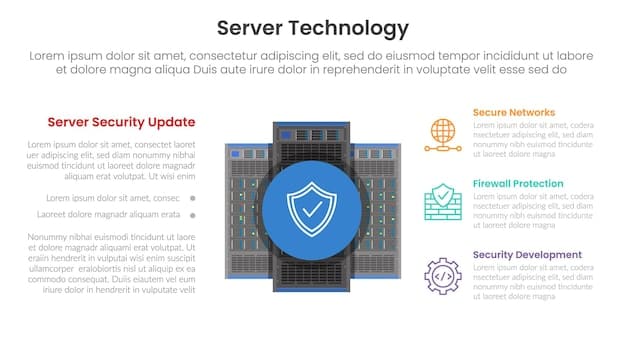Securing the IoT: A US Guide to Connected Device Security in 2025

Securing the Internet of Things (IoT) in the US by 2025 involves understanding evolving threats, implementing robust security measures, and staying informed about regulatory changes to protect connected devices.
The Internet of Things (IoT): Securing Your Connected Devices in the US in 2025 is becoming increasingly critical as more devices connect to the internet, creating potential vulnerabilities that must be addressed to protect our digital lives.
Understanding the Expanding IoT Landscape in the US
The Internet of Things (IoT) has rapidly expanded, permeating nearly every aspect of daily life in the US. From smart homes to connected cars, the convenience and efficiency offered by IoT devices are undeniable. However, this increased connectivity also presents significant security challenges that need to be addressed proactively.
By 2025, the IoT landscape will be even more ubiquitous, with advancements in 5G technology enabling faster and more reliable connections for a greater number of devices. This expansion will bring about new opportunities and advancements but also a more complex threat environment. Understanding the current state and future projections of IoT is essential for implementing appropriate security measures.
Growth of IoT Devices
The number of IoT devices in US homes and businesses continues to grow exponentially. This increase includes everything from smart appliances and wearable devices to industrial sensors and medical equipment. Each device represents a potential entry point for cyberattacks if not properly secured.
Impact of 5G Technology
The rollout of 5G technology plays a crucial role in the expansion of the IoT. With faster speeds and lower latency, 5G enables more efficient communication between devices, supporting more complex and data-intensive applications. However, this also means an increased attack surface that requires robust security protocols.

Securing your IoT devices in the US by 2025 requires a multi-faceted approach, taking into account the current and future state of technology and potential threats. It’s not just about protecting individual devices but also about ensuring the privacy and security of the entire network.
Identifying Potential Security Risks
As the IoT ecosystem grows, so do the potential security risks. Identifying these vulnerabilities is the first step in securing your connected devices. Common risks include weak passwords, unencrypted data transmission, and outdated software. Understanding these vulnerabilities is crucial to implementing effective security measures.
In the US, both consumers and businesses are increasingly aware of the threats posed by unsecured IoT devices. Data breaches, privacy violations, and even physical harm are potential consequences of neglecting IoT security. Being aware of these risks can help users make informed decisions about device selection and usage.
Weak Passwords and Default Settings
Many IoT devices come with default passwords that are easy to guess or that are never changed by the user. This is a common entry point for attackers. Strong passwords and unique usernames are essential for protecting your devices.
Unencrypted Data Transmission
Data transmitted between IoT devices and servers is often unencrypted, making it vulnerable to interception. Encryption is a key security measure to protect sensitive information from being accessed by unauthorized parties.
Outdated Software and Firmware
Many IoT devices lack regular software and firmware updates, leaving them vulnerable to known exploits. Keeping your devices updated with the latest security patches is critical to mitigating this risk.
- Ensure devices have strong, unique passwords.
- Enable encryption for data transmission.
- Regularly update software and firmware on all devices.
- Monitor network traffic for suspicious activity.
Addressing these security risks requires a proactive approach, involving both manufacturers and users. Manufacturers need to prioritize security in the design and development of IoT devices, while users need to take responsibility for securing their own devices and networks.
Implementing Security Best Practices
Implementing security best practices is essential for protecting your IoT devices in the US. This includes using strong passwords, enabling multi-factor authentication, and keeping your devices updated with the latest security patches. These measures can significantly reduce the risk of cyberattacks.
Furthermore, consider using a separate network for your IoT devices. This can help isolate them from your main network, preventing attackers from gaining access to your more sensitive data. Monitoring your network traffic for suspicious activity is also a good practice.

Using Strong Passwords and Multi-Factor Authentication
Strong passwords are the first line of defense against unauthorized access. Use a combination of upper and lower case letters, numbers, and symbols. Multi-factor authentication adds an extra layer of security by requiring a second form of verification.
Keeping Devices Updated
Regularly updating your IoT devices with the latest security patches is crucial for mitigating known vulnerabilities. Enable automatic updates whenever possible to ensure your devices are always protected.
Network Segmentation
Creating a separate network for your IoT devices can help isolate them from your main network, preventing attackers from gaining access to more sensitive data. Use a guest network or VLAN to segment your IoT devices.
By implementing these security best practices, you can significantly reduce the risk of cyberattacks and protect your connected devices in the US. It’s not a one-time effort but an ongoing process that requires vigilance and awareness.
The Role of Regulations and Standards
Regulations and standards play a critical role in ensuring the security of IoT devices in the US. Government agencies and industry organizations are working to develop guidelines and standards for IoT security. These guidelines aim to provide a framework for manufacturers to follow in designing and developing secure devices.
In the US, several laws and regulations address IoT security, including the California IoT Security Law and the NIST Cybersecurity Framework. These regulations set minimum security standards for IoT devices sold in the state and provide guidance on implementing effective cybersecurity practices.
California IoT Security Law
The California IoT Security Law, enacted in 2020, requires manufacturers of connected devices to implement reasonable security features. This law aims to prevent common security vulnerabilities such as default passwords and unencrypted data transmission.
NIST Cybersecurity Framework
The National Institute of Standards and Technology (NIST) Cybersecurity Framework provides guidance on implementing effective cybersecurity practices for IoT devices. This framework includes recommendations for identifying, protecting, detecting, responding to, and recovering from cyber incidents.
- Adhere to industry standards and guidelines for IoT security.
- Comply with relevant laws and regulations, such as the California IoT Security Law.
- Implement the NIST Cybersecurity Framework to enhance security practices.
- Participate in industry initiatives to promote IoT security.
Staying informed about the latest regulations and standards is essential for both manufacturers and users. By complying with these guidelines, you can help ensure the security of your IoT devices and protect your data from cyber threats.
Future Trends in IoT Security
The future of IoT security in the US will be shaped by emerging trends and technologies. Artificial intelligence (AI), blockchain, and edge computing are expected to play a significant role in enhancing IoT security in the coming years. Staying ahead of these trends is essential for maintaining a strong security posture.
AI can be used to detect and respond to cyber threats in real-time, while blockchain can provide a secure and transparent way to manage IoT devices and data. Edge computing can reduce latency and improve security by processing data closer to the source.
Artificial Intelligence (AI) and Machine Learning
AI and machine learning can be used to analyze network traffic and identify suspicious activity. These technologies can also automate security tasks and improve the speed and accuracy of threat detection.
Blockchain Technology
Blockchain can provide a secure and transparent way to manage IoT devices and data. This technology can be used to create a tamper-proof record of device activity and prevent unauthorized access.
Edge Computing
Edge computing can reduce latency and improve security by processing data closer to the source. This approach can minimize the amount of data that needs to be transmitted over the network, reducing the risk of interception.
Adopting these emerging technologies can help enhance the security of your IoT devices and protect your data from cyber threats. It’s important to stay informed about the latest trends and invest in solutions that can help you mitigate risks.
Educating Users and Raising Awareness
Educating users and raising awareness about IoT security risks is crucial for protecting connected devices in the US. Many users are unaware of the potential security vulnerabilities and the steps they can take to mitigate them. Providing clear and accessible information can empower users to make informed decisions about device selection and usage.
Educational programs, workshops, and online resources can help users understand the risks and learn how to secure their devices. These initiatives should focus on practical steps that users can take, such as using strong passwords, enabling multi-factor authentication, and keeping their devices updated.
Educational Programs and Workshops
Educational programs and workshops can provide users with hands-on training on IoT security best practices. These initiatives can cover topics such as password management, network security, and device configuration.
Online Resources and Guides
Online resources and guides can provide users with easy-to-understand information on IoT security. These resources can include articles, videos, and infographics that explain the risks and provide practical tips for securing devices.
- Provide clear and accessible information on IoT security risks.
- Offer educational programs and workshops for users.
- Develop online resources and guides that explain security best practices.
- Promote awareness campaigns to highlight the importance of IoT security.
By educating users and raising awareness about IoT security, we can create a more secure ecosystem for connected devices in the US. This requires a collaborative effort from manufacturers, government agencies, and industry organizations.
Preparing for 2025: A Proactive Approach
Securing the Internet of Things (IoT) in the US by 2025 requires a proactive approach that anticipates future threats and vulnerabilities. This includes staying informed about emerging trends, implementing robust security measures, and educating users about the risks. By taking these steps, you can protect your connected devices and data from cyber threats.
Preparing for 2025 also involves collaborating with industry partners, participating in standards development initiatives, and advocating for policies that promote IoT security. A collective effort is needed to address the challenges and opportunities presented by the expanding IoT landscape.
| Key Point | Brief Description |
|---|---|
| 🛡️ Strong Passwords | Use complex and unique passwords for each IoT device. |
| 🔄 Regular Updates | Keep device software updated to patch security vulnerabilities. |
| 🌐 Network Segmentation | Isolate IoT devices on a separate network to limit potential breaches. |
| 🔒 Multi-Factor Authentication | Enable MFA for added security on supported IoT platforms. |
FAQ
▼
The biggest risk often lies in weak, default passwords making devices easy targets for exploitation by malicious actors seeking network access.
▼
Update your devices as soon as updates are available, as these updates often include critical security patches addressing known vulnerabilities.
▼
Network segmentation isolates IoT devices from primary networks, preventing compromised devices from accessing sensitive data and reducing breach impacts.
▼
Yes, some states, like California, have enacted laws setting minimum security standards for manufacturers of IoT devices sold within the state.
▼
AI improves security by detecting anomalies in device behavior in real-time, automating threat responses, and enhancing overall vulnerability management processes.
Conclusion
Securing the Internet of Things in the US by 2025 requires collaborative efforts and a proactive security stance, integrating strong security measures, advocating for effective policies, and educating users to safeguard against evolving cyber threats.





